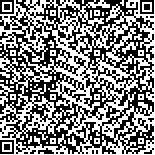|
|
| |
|
|
| 本文已被:浏览 2834次 下载 2705次 |

码上扫一扫! |
|
|
| 膝沟藻毒素液质联用快速检测及其在海洋生物体内的累积 |
|
陈桃英1, 柳俊秀1, 李水军2, 刘利平1, 何培民1
|
|
1.上海海洋大学水产与生命学院;2.上海市徐汇区中心医院中心实验室
|
|
| 摘要: |
| 采用高效液相色谱-质谱联用技术分析了微小亚历山大藻中的膝沟藻毒素(Gonyautoxin, GTX1,4 和GTX2,3)以及蒙古裸腹溞和菲律宾蛤仔摄食该藻后对膝沟藻毒素的累积状况。结果表明, 采用高效液相色谱-质谱联用方法, 可快速(4h 内)检测出这三种海洋生物中的膝沟藻毒素, 且培养的微小亚历山大藻每个细胞的膝沟藻毒素含量为9.46fmol。蒙古裸腹溞摄食微小亚历山大藻2h、18h、24h 后, 其体内GTX1,4 的含量分别为4.8908、12.6241、31.4968mg/g,GTX2,3的含量分别为1.656、3.8533、10.9026 mg/g, 且对GTX1,4 积累量比GTX2,3高, 在24h 内GTX1,4 含量是GTX2,3 的2.89 倍。菲律宾蛤仔摄食微小亚历山大藻2h、24h 和48h 后, 肌肉中GTX1,4 含量分别为3.1271、3.6709 和4.6906 μg/g, GTX2,3 含量分别为7.1874、8.1675 和9.1476 μg/g; 内脏团中GTX1,4 含量分别为4.7088、4.2178 和 5.5064 μg/g, GTX2,3 含量分别为7.6774、9.1476 和13.066 μg/g, 表明GTX1,4 和GTX2,3 在肌肉中含量逐步增加, 且GTX2,3 累积量比GTX1,4 高, 在48h 内肌肉GTX2,3 含量是GTX1,4 的1.95 倍, 内脏团GTX2,3 含量是GTX1,4 的2.37 倍。在停食净水培养96h 后, 内脏团和肌肉对GTX1,4 消解率已达100%, 而肌肉和内脏团对GTX2,3 消解率分别为16.1%和45%。本文结果表明采用高效液相色谱-质谱联用方法能快速测定赤潮藻、浮游动物和贝类中的膝沟藻毒素含量, 但不同生物对膝沟藻毒素有不同的累积方式。
|
| 关键词: 高效液相色谱-质谱联用, 微小亚历山大藻, 蒙古裸腹溞, 菲律宾蛤仔, 膝沟藻毒素, 累积 |
| DOI:10.11693/hyhz200901015015 |
| 分类号: |
| 基金项目:上海市优秀学科带头人计划项目, 08XD14037 号; 上海市青年科技启明星计划项目, 08QA1405900 号; 上海市登山计划项目, 06dz12015 号; 上海市教委重点科研项目, 科04-131 号; 上海市重点学科建设项目, Y1101 号; 上海市教委重点学科项目,J50701 号; 上海市优秀青年教师选拔基金项目, 科07-10 号; 上海海洋大学博士启动基金项目, 科06-310 号。 |
|
| GONYAUTOXIN: HPLC-MS DETECTION AND ACCUMULATION IN MARINE ORGANISMS |
|
CHEN Tao-Ying1, LIU Jun-Xiu1, LI Shui-Jun2, LIU Li-Ping1, HE Pei-Min1
|
|
1.College of Fisheries and Life Science, Shanghai Ocean University;2.Central Laboratory, Shanghai Xuhui Central Hospital
|
| Abstract: |
| The gonyautoxins (GTX, including GTX1,4 and GTX2,3) in Alexandrium minutum, Moina mongolica Daday, and Ruditapes philippinarum, which fed with A. minutum, were analyzed by HPLC-MS (High Performance Liquid Chromatography coupled with Mass Spectrometry). The results showed that the GTX content in these species could be detected with HPLC-MS. The GTX content per cell in A. minutum was 9.46fmol. In M. mongolica fed with A. minutum for 2h, 18h and 24h, GTX1,4 content was 4.8908, 12.6241, 31.4968mg/g, and GTX2,3 content at 1.656, 3.8533, 10.9026 mg/g, respectively, which indicates that GTX content in M. mongolica increased with the exposure time to A. minutum, and GTX2,3 was 2.89 times of GTX1,4 content. In R. philippinarum fed with A. minutum for 2h, 24h, and 48h, the GTX1,4 content in muscles was 3.1271, 3.6709, and 4.6906 μg/g, GTX2,3 content at 7.1874, 8.1675 and 9.1476 μg/g, and GTX1,4 content in viscera was 4.7088, 4.2178 and 5.5064 μg/g, respectively, indicating that the GTX content in R. philippinarum increased with the exposure time to A. minutum, and GTX2,3 was accumulated more than GTX1,4; and GTX content in viscera was greater than that in mussel: the GTX2,3 content in muscles in 48h was 1.95 times of that GTX1,4, and the GTX2,3 content in viscera was 2.37 times of that GTX1,4. After animals were starved for 96h, the GTX1,4 content in muscles and viscera reduced to 0, and GTX2,3 content reduced by 16.1% and 45%, respectively. The results indicate that HPLC-MS can be used to detect rapidly the GTX in alga, zooplankton, and shellfish. The accumulation of GTX was different in higher trophic-level organisms.
|
| Key words: HPLC-MS, Alexandrium minutum, Moina mongolica, Ruditapes philippinarum, Gonyautoxin, Accumulation |
|
|
|
|
|
|
